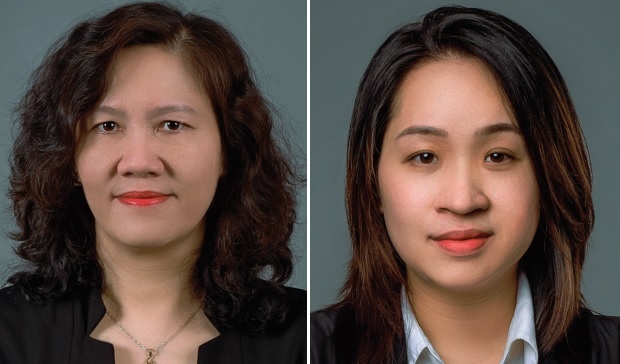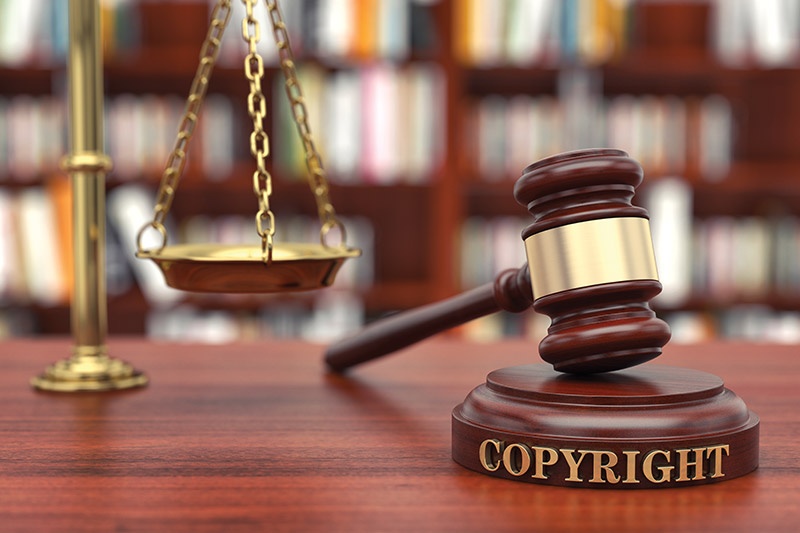Conforming to treaty via Law on IP
The amended Law on Intellectual Property (IP) provides a more comprehensive legal framework for effective protection and enforcement for holders of IP rights. This is expected to create a strong dynamic for science and technology research, innovation and creation, and to encourage the commercial exploitation of such protected rights more effectively.
 |
| Partner Nguyen Thi Hong Anh and junior associate Vu Hoang Ha Thu of Indochine Counsel |
It will also encourage foreign investment in high-tech industries that requires technology transfer as the rights of IP holders will have greater protection. As such, the amended IP law will encourage foreign investment and bring benefits for both manufacturing and retail sectors.
In comparison with the Berne Convention, the WCT provides for two additional subjects susceptible of copyright protection, namely computer programmes (which are to be treated as literary and artistic works), and compilations of data which are selected or arranged in any form. Such copyright protection does not extend to the data or the material itself and is without prejudice to any copyright subsisting in the data or material contained in the compilation.
In fact, these two subjects of copyright protection were included in Article 14.1(m) of the 2005 version of the law. But, in accordance with Article 7.2(i) of the WCT regarding the right of an author to rental receipts in computer programmes, Article 20.1(e) of the amended law excludes copyright protection for computer programmes in cases where they are not the essential object of the rental.
Corresponding to authors’ distribution rights in literary and artistic works as provided in Article 6 of the WTC, Articles 20.1(d) and 20.3(b) of the amended law on IP specify the distribution right (economic right) of the copyright holder that comprises the right to distribution, importation for distribution to the public through sale or another form of ownership assignment of originals or copies of the work under tangible forms, except in the case of consequent distribution or importation for distribution of originals and copies of works under the authorisation of the copyright holder.
Communicating to the public
Regarding the right to communicate to the public as provided in Article 8 of the WCT, as specified in Articles 20.1(b) and 20.1(dd) of the amended law, the right of communication to the public comprises the right to directly or indirectly display the works to the public through sound and visual recordings or any technical means from a place that members of the public can access so long as time and parts of the works are limited in place and time by the author.
It also comprises broadcasts or communications to the public of the authors’ works by wireless or landline, electronic information networks, or any other technical means, including making available to the public the works in such a way as to be independent of the place and time controlled by the author.
For implementation of obligations of a contracting party as set forth in Articles 11 and 12 of the WCT relating to technological measures to protect rights and rights management information, the amended IP law has supplemented two respective definitions in Articles 4.10(b) and 4.10(d).
The first is technological measures to protect rights, which are measures to use any technique, technology, equipment or component during normal operations with the main function to protect copyright and related rights for acts performed without the permission of the copyright holder or the related right holder.
The second regards rights management information, which means identifying information about a work, performance, sound recording, visual recording, broadcast programme, or encrypted programme-carrying satellite signals. These can be about the author, performer, copyright holder, related right holders, and terms and conditions of use of the work, as well as numbers or codes that represent such information.
Rights management information must be attached to or appear in connection with a copy of a work, performance, sound/visual recording, or broadcast programme when they are transmitted to the public.
 |
Infringing rights
The definition of effective technological measures is supplemented in Article 4.10(c) of the amended law on IP to make it consistent with the regulations of Articles 11.14 and 11.16 of the Regional Comprehensive Economic Partnership, namely effective technological measures.
This means a technological measure to protect the rights in which the holder of copyright and related right controls the use of works, performances, sound recordings, visual recordings, broadcast programmes, and encrypted programmes-carrying satellite signals, through access control applications, protection procedures, or copy control mechanisms.
In this connection, Articles 28 and 35 of the amended law provide for a number of additional acts infringing copyrights and copyright-related rights. The first is intentionally removing or invalidating effective technological measures applied by the right holders in order to perform prescribed infringing conducts.
Also included are manufacturing, distributing, importing, offering for sale, selling, promoting, advertising, marketing, renting, or storing for commercial purposes devices, products or component parts; introducing or providing services when knowing or having grounds to know that such devices, products or component parts, or service are manufactured, used for invalidating the applied effective technological measures.
Intentionally deleting, removing, or changing the rights management information without consent from the right holders when knowing or having grounds to know that the performance of such conduct will incite, enable, facilitate or hire right infringements as prescribed by law is another inclusion.
The final aspect is intentionally distributing, importing for distribution, broadcasting, communicating or making available to the public copies of copyright-protected works or rights protected products when knowing or having grounds to know that rights management information has been deleted, removed, or changed without consent from the right holders; or when knowing or having grounds to know that the performing of such conduct will incite, enable, facilitate or hire right infringements as prescribed by law.
As far as exceptions to the infringement of copyright, the amended law on IP requires that in such exceptions, information about the authors and origin of works must be quoted.
The exceptions comprise several cases of fair use for non-commercial purposes, of published works, that do not require the right holders’ permission and payment of royalties, but require that such use shall not conflict with the normal exploitation of the protected works and does not cause reasonable damage to the legal interests of the authors and right holders, and the prescribed copying is not applicable for certain works, including architectural works, applied art works, and computer programmes.
The first aspect is making one copy for purposes of scientific research or personal study (except for the case of copying by public copying devices); and second is reasonably copying a part of a work using a copying device for the same reasons.
Third is reasonably using the work for illustration in lectures, publications, performances, sound recordings, visual recordings, or broadcast programme for teaching purposes, provided that the relevant technical measures shall be taken if making works available on an internal computer networks
Fourth involves using work in public activities of state bodies, while the fifth aspect is reasonably reciting the work without misrepresenting the authors’ views for the commentary, introduction or illustration purposes; or for writing articles, using in periodicals, broadcasting programmes, and documentaries. Using work in library activities for non-commercial purposes in prescribed conditions is another aspect, and, finally, so is using work by disabled people in prescribed cases as provided in Article 25(a) of the amended law.
With regard to this, the definition of “copying” in Article 4.10 is more clearly specified in the law that states “copying is the making of a copy of the whole or part of a work or sound recording, visual recording by any means or form”.
Similar exceptions to the infringement of copyright-related rights for published performances, recordings and broadcasting are provided in Article 32 of the amended law on IP.
What the stars mean:
★ Poor ★ ★ Promising ★★★ Good ★★★★ Very good ★★★★★ Exceptional
Related Contents
Latest News
More News
- Sandbox for crypto assets in Vietnam: if not now, when? (March 11, 2025 | 11:34)
- Securities law reflects alignment efforts (February 25, 2025 | 10:42)
- New law marks shift for electricity market (February 12, 2025 | 14:30)
- Indochine Counsel launches new corporate identity (September 23, 2024 | 06:52)
- Key developments for ID's at credit institutions (April 24, 2024 | 16:30)
- Virtual assets in Vietnam: a regulatory outlook (January 04, 2024 | 17:11)
- Investors must be wary of the status of digital assets (June 12, 2023 | 12:13)
- Nuts and bolts of new personal data decree (May 09, 2023 | 15:00)
- Cybersecurity legislation’s upgrade (November 03, 2022 | 16:00)
- Defining innovative startup enterprises in Vietnam (September 01, 2022 | 20:15)

 Tag:
Tag:




















 Mobile Version
Mobile Version